Menu
You can manage your membership and billing method by clicking here
Terms of Service
Privacy Policy
Copyright © 2025 Office of Immigration Australia, a private company registered in Australia. All Rights Reserved.

Checking membership status...
 EXCLUSIVE MEMBERS ONLY ACCESS
EXCLUSIVE MEMBERS ONLY ACCESSTo access this month’s edition & Member’s only resources, enter your registered email address.



Exclusive Australian Immigration News, Updates & Opportunities
August 2025
This bulletin is for members only, and provides our members with month to month updates on Australian immigration policy changes and consequential opportunities. Opportunities are found via federal and state government policy shifts for the demand and supply for certain occupations.
This bulletin will keep you up to date so that you do not have to employ expensive immigration lawyers to provide you with monthly research.
August 2025 has arrived — and with it, powerful updates and evolving opportunities are reshaping the path for skilled migrants and international students across Australia! Let’s unpack what’s changing…
In this month’s Federal News: Income thresholds for skilled visa categories have increased, with the TSMIT rising to $76,515 and the Specialist Skills Income Threshold to $141,210, ensuring fair wages and targeting high-value talent.
Offshore skilled visa applicants on a 485 visa can now access Bridging Visa A, offering full work and review rights. Meanwhile, South Australia’s Build Connect initiative is helping address labour shortages by fast-tracking skilled migrants into the construction industry.
In this month’s State News: Western Australia made headlines as it officially surpassed 3 million residents — posting the fastest population growth in the nation. This boom, driven significantly by skilled migration, is boosting demand for workers across Perth and regional WA.
All states and territories reported positive population growth, with net overseas migration remaining the top contributor nationwide. To see what that means for current nomination opportunities and demand-based occupations, check out this month’s updated State Migration section.
In this month’s Economic News: Australia recorded a staggering $38.2 billion in outbound remittances in 2024 — a direct result of booming migration and rising employment among skilled visa holders and international students. India and China topped the list, receiving a combined $12.6 billion.
At the same time, the federal government has reaffirmed its ambitious Housing Accord targets, aiming to build 1.2 million homes in five years. With the construction industry needing to ramp up output by over 30%, demand for skilled trades, project managers, and engineers is expected to soar.
In this month’s Student News: International students remain front and centre in Australia’s migration strategy. While some settings are tightening — including fee increases and stricter PR pathways — smart course selection remains the key to long-term success.
In this edition, we show how students can align their studies with the Skilled Occupation List and regional settlement incentives to improve their chances of permanent residency. We also cover the opening of the new Pacific Engagement Visa (Subclass 192), offering new regional connections and opportunities.
All this and much more in the August issue of The Australian Immigration Bulletin! Let’s take a deeper look at what has happened so far and what is planned for the remainder of August 2025 in Australian Immigration, so that you can start planning!
All members now have FREE access to an online IELTS English Platform and course to practice, study and improve their English and IELTS score. The IELTS exam is one of the key recommended exams you will need to take in order to Apply for Skilled Migration to Australia and the better your results, the higher points you will get when submitting an expression of interest. The advanced English and IELTS platform will allow all members to practice Mock IELTS Exams, learn cutting edge tips and gain a greater understanding of how to achieve a Band 7+.
All members also have access to “ImmiConnect” which is now available in the member’s area. ImmiConnect is the Office of Immigration Australia’s Employer Sponsored program which allows overseas workers to receive job interview invitations from Australian employers, when job opportunities come available.
The program aims to bring globally mobile, highly-skilled and specialised individuals to Australia who can fill critical areas of need.
ImmiConnect is exclusive to active Australian Immigration Bulletin Members only. You must be a current Australian Immigration Bulletin Member to be eligible to receive job interview invitations.
So if you are interested in receiving these invitations, please sign up for FREE by Clicking “ImmiConnect” and adding your name and email address.

*2 WINNERS DRAWN EVERY MONTH:
Current Round: June 2025 – October 2025 (10 Winners/Prizes in total)
There is always a winner, and the next one could be you!
The winners of the August 2025 Immigration Prize Giveaway were drawn at 10am AEST on 1st August 2025.
| Prize Value | First Name | Occupation | Location | Winner Drawn |
|---|---|---|---|---|
| (AUD) $769.00 | Maxine S. | Teacher | South Africa | 10am (AEST) 1 July 2025 |
| (AUD) $769.00 | Angel J. | Accountant | Philippines | 10am (AEST) 1 July 2025 |
| (AUD) $769.00 | Amy K. | Nurse | United Kingdom | 10am (AEST) 1 June 2025 |
| (AUD) $769.00 | Mohammad M. | Industrial Engineer | Bangladesh | 10am (AEST) 1 June 2025 |
| (AUD) $769.00 | Lesadel L. | Physiotherapist | Philippines | 10am (AEST) 1 August 2025 |
| (AUD) $769.00 | Mateus A. | Civil Engineer | Brazil | 10am (AEST) 1 August 2025 |
Congratulations to the August 2025 winners! You have been sent a confirmation email with details on how to claim your prize!
The next 2 lucky winners will be drawn at 10am AEST on 1st August 2025.
This Bulletin and its contents is for general information purposes only and should not be used as a substitute for consultation with professional advisors.
As legislation and travel requirements are constantly changing, we strongly recommend obtaining advice on your individual situation from a Registered Migration Agent.
Please click here to book a consultation with one of our Registered Australian Migration Agents, located in Australia.
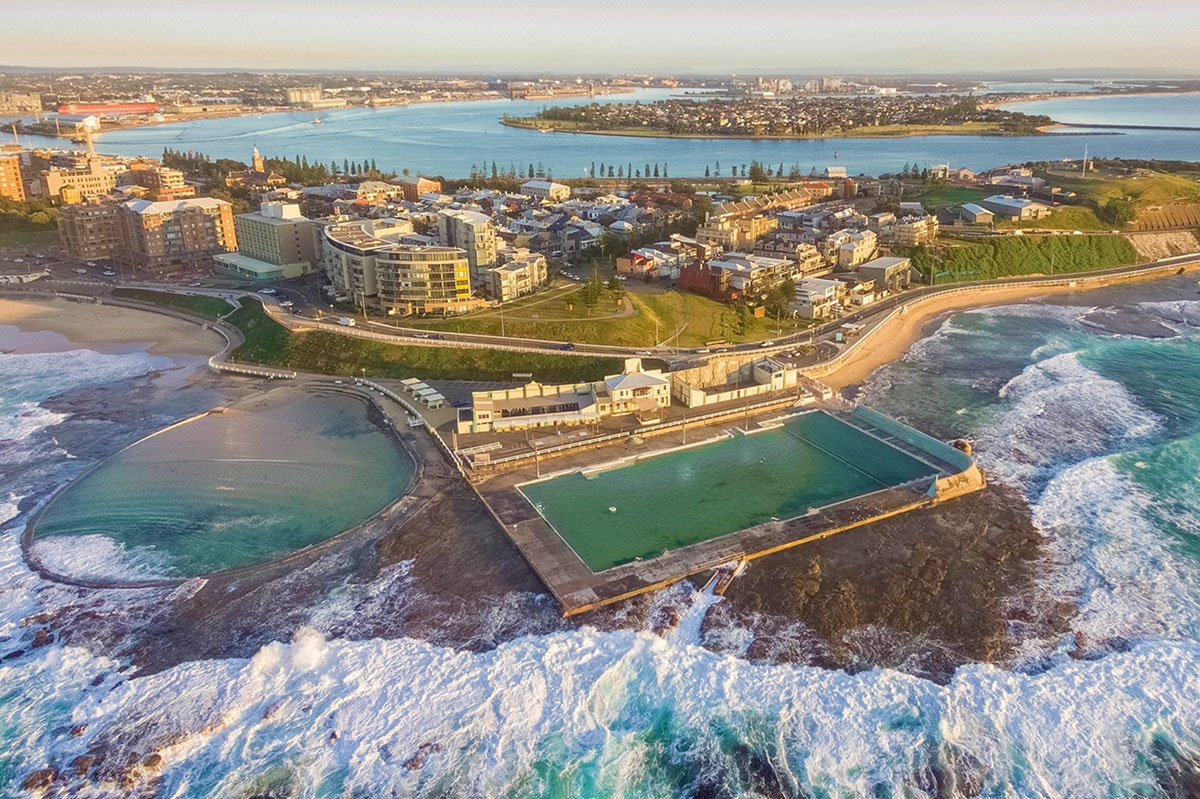
Newcastle, New South Wales
The Results of the August 2021 census were made public on 12th July 2022, and revealed that Australia has become a majority migrant nation, as the census data shows for the first time that more than 50 per cent of residents were born overseas or have an immigrant parent. Last year’s census counted nearly 25.5 million people, including 1 million new residents.
Australia’s 2025 Migration Program has been carefully designed to boost the social and economic outcomes that meet Australia’s needs. In fact, the migration programme was first launched in 1945 following the aftermath of World War 2. Given this long history, it is worth understanding how it works. The Australian Immigration Bulletin exists to help explain this in more detail.
As we’ve entered the 7th month of the year, join us for a look at the latest news and developments in the world of Australian Immigration!
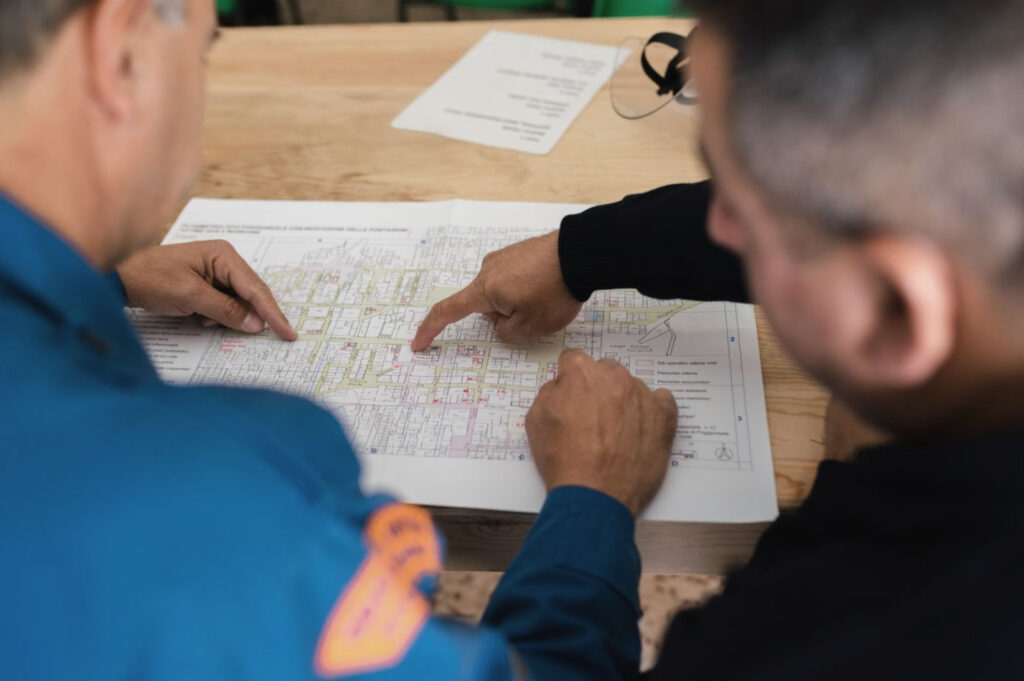
We spoke with Mansi, a skilled migrant and civil engineer currently working for SMEC on road and highway projects.
Please tell us about yourself and when you moved to Australia.
My name is Mansi and I come from India. I arrived in Australia in May 2022 to pursue a Master’s in Civil Engineering at the University of Queensland. After graduating, I spent about 6–7 months trying to find a job in engineering. I even worked in a kebab shop just to support myself during that time.
What are some mistakes migrants could avoid while looking and applying for jobs?
One mistake was not leveraging every opportunity to network. I underestimated casual conversations—eventually, while serving kebabs, I overheard a customer talking about engineering. He was wearing a SMEC shirt. I introduced myself, asked about vacancies, and got his email. That simple interaction led directly to my current role.
What are employers mainly looking for?
Employers want sincerity, initiative and cultural fit. It’s not just technical skills—they care about communication, teamwork and adaptability. Show up prepared, willing to learn, and make an effort to connect.
What other practical advice can you give?
Final words?
Don’t limit yourself. Embrace every chance to engage—through part-time work, casual chats, volunteering, or industry events. Often, it’s those genuine connections that help your resume cut through.
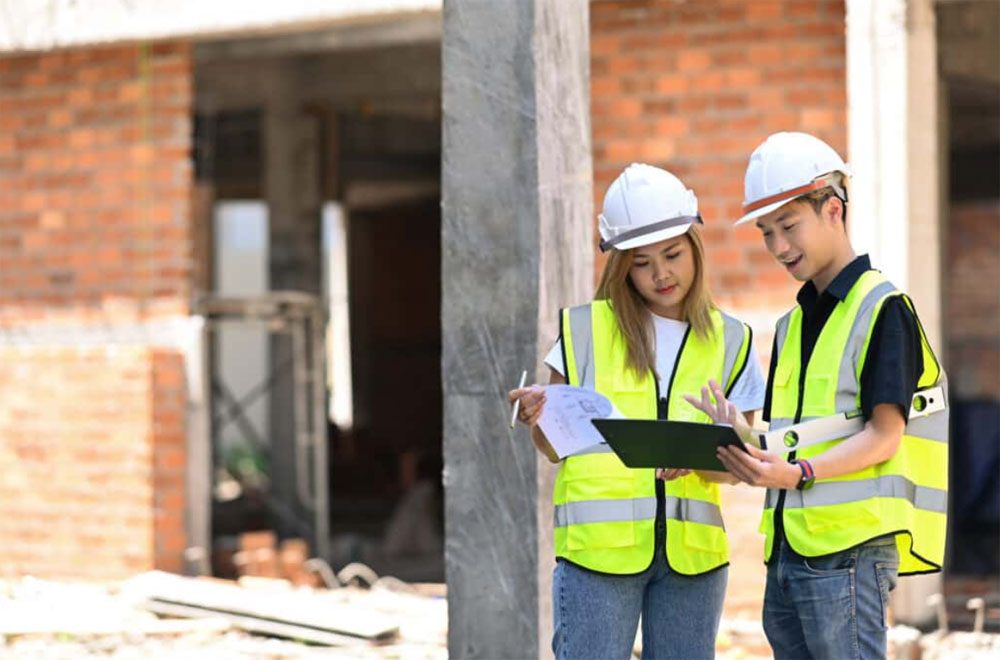
In a powerful move to address critical labour shortages, South Australia has launched the Build Connect initiative—an ambitious program linking skilled migrants with high-demand jobs in the booming construction sector.
Industry leaders estimate the state needs an additional 30,000 construction workers over the next three years, including 15,000 qualified tradespeople such as tilers, bricklayers, and concreters. Despite a 28% increase in skilled migrant workers since 2017, demand still outpaces supply.
A standout example of this pathway’s success is Mohammad, a migrant from Afghanistan who arrived in 2012. Initially employed in food processing, he retrained in Australia as a tiler—leveraging his prior experience from Afghanistan and Iran. Today, Mohammad is thriving in Adelaide’s construction industry and exemplifies how migrants can successfully transition into skilled trades and achieve financial stability.
To help more skilled migrants follow this path, the Build Connect program offers:
The South Australian Government has committed $500,000 to support over 200 skilled placements, with a focus on delivering vital projects such as hospitals, housing, renewable energy, and large-scale land developments.
This initiative is not only filling urgent gaps—it’s empowering migrants to secure high-paying, stable careers aligned with their overseas experience.
Watch for more updates as other states look to replicate this model to solve workforce shortages and drive future-ready infrastructure projects.
This initiative delivers a dual benefit:
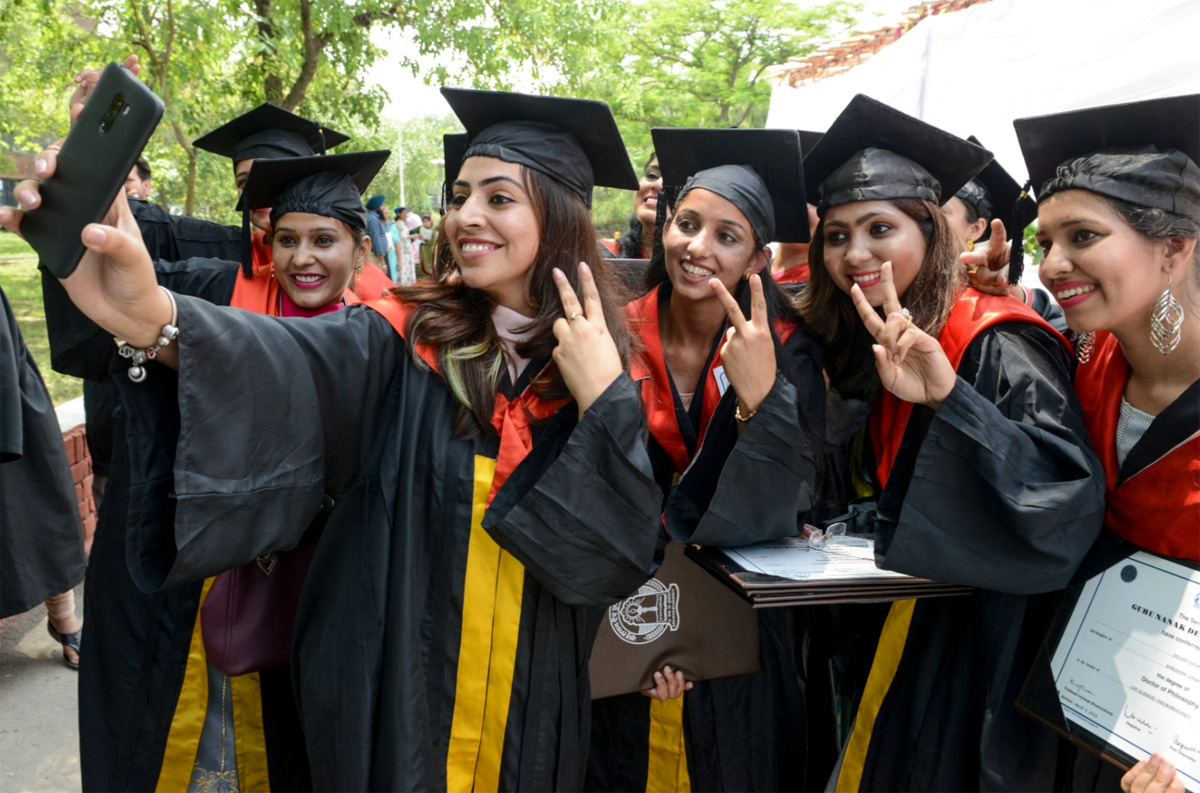
Australia has reaffirmed its commitment to attracting global talent by clarifying an important point in the skilled migration process. Graduates holding a valid Temporary Graduate visa (subclass 485) who apply for a Skilled Independent visa (subclass 189) or State Nominated visa (subclass 190) from outside Australia can now be granted a Bridging Visa A (BVA) once they return—contrary to previous assumptions that only a Bridging Visa E (BVE) was available in this scenario.
This clarification opens up greater flexibility for skilled migrants who wish to lodge their permanent residency applications while offshore, without jeopardising their legal status or work rights in Australia.
Until recently, many assumed that lodging a 189 or 190 visa from overseas—even while holding a valid 485—would exclude applicants from eligibility for a Bridging Visa A. The concern was that they would either receive no bridging visa at all, or only a BVE, which carries restrictions on work and travel.
This has now been clarified: if you lodge your skilled visa application while your 485 is still valid, and do so online—even from offshore—you may be eligible for a Bridging Visa A. Once you return to Australia and your 485 expires, the BVA will come into effect, allowing you to remain lawfully in Australia while your permanent visa is being processed.
This is a significant improvement for skilled graduates making long-term plans in Australia. The BVA offers benefits that make the transition from temporary to permanent residency far smoother than the BVE alternative.
This clarification offers peace of mind to those who may have hesitated to apply while overseas due to concerns over visa status or work eligibility.
Applicants should be aware that while the BVA can be issued based on an offshore application (if the substantive visa is valid at the time of lodgement), the right to appeal a refusal to the Administrative Appeals Tribunal (AAT) usually requires the applicant to have been physically in Australia at the time of lodgement. This means that applicants seeking to preserve appeal rights should still consider lodging onshore.
This update is an encouraging signal to skilled professionals abroad: Australia continues to offer clear, lawful, and practical pathways to permanent residency. By confirming that Bridging Visa A eligibility extends to certain offshore applicants, the Department has created greater certainty and flexibility—without compromising legal safeguards.
For qualified graduates holding a 485 visa, this is an ideal time to consider the 189 or 190 pathway. Whether onshore or offshore, Australia welcomes your skills, your contribution, and your future.

From 1 July 2025, sweeping updates to Australia’s skilled migration and student visa programs have taken effect, aimed at building a migration system that is more fair, transparent, and aligned with the country’s long-term economic needs. The changes are part of the federal government’s broader strategy to restore integrity to migration pathways and ensure that overseas talent is contributing meaningfully to the national workforce.
While some headlines have focused on the tightening aspects of the reforms, the underlying message is clear: Australia continues to welcome skilled professionals and high-quality international students — and is now offering clearer, more equitable pathways for those who meet genuine demand.
A major pillar of the changes is the rise in salary thresholds for employer-sponsored visas. From 1 July, the:
These figures, indexed to national wage growth (AWOTE), ensure that migrant workers are paid in line with Australian standards, protecting them from underpayment and helping level the playing field for local and overseas employees alike.
These updates apply only to new applications lodged from July onwards. Current visa holders and existing applications are unaffected.
For prospective migrants, this change offers reassurance: if you qualify under the new thresholds, your skills are in genuine demand and valued at fair Australian market rates — an encouraging sign that your pathway is both needed and protected.
International students remain a vital part of Australia’s cultural and economic landscape. As part of the reform package, the student visa application fee is set to increase from $1,600 to $2,000. While this may appear significant, it reflects the government’s goal of discouraging non-genuine applicants while making the system more efficient and credible for legitimate students.
The new fee structure is accompanied by stricter financial and academic requirements, giving qualified students a clearer path to study, graduate, and potentially transition into skilled migration where appropriate. For education providers and students alike, the message is simple: quality is key, and genuine applicants will continue to find Australia an open and welcoming destination.
Alongside skilled and student pathways, humanitarian migration has also seen a clarification of requirements. Applicants under the Special Humanitarian Programme (SHP) and certain refugee visas must now lodge both Form 681 (proposal) and Form 842 (application) simultaneously via ImmiAccount. This step strengthens accountability and helps streamline processing, particularly in high-demand categories.
In the face of rising housing costs and infrastructure pressures, the Albanese government’s approach is pragmatic: reduce unsustainable churn while preserving — and even improving — access for skilled professionals, committed students, and humanitarian entrants.
The higher thresholds aren’t barriers — they’re signals. Australia wants to attract top global talent who meet national priorities and are fairly compensated. For migrants who meet the new criteria, the process is more stable, predictable, and fair than ever before.
These changes mark not a closing of doors, but a sharpening of focus. And for those ready to contribute, Australia remains one of the most desirable, liveable destinations in the world — with the skilled visa and student pathways to match.
Here is your positively framed, factually accurate article for The Australian Immigration Bulletin, highlighting the 1 July 2025 visa rule changes while reinforcing Australia’s commitment to skilled professionals, genuine students, and regional partnerships:
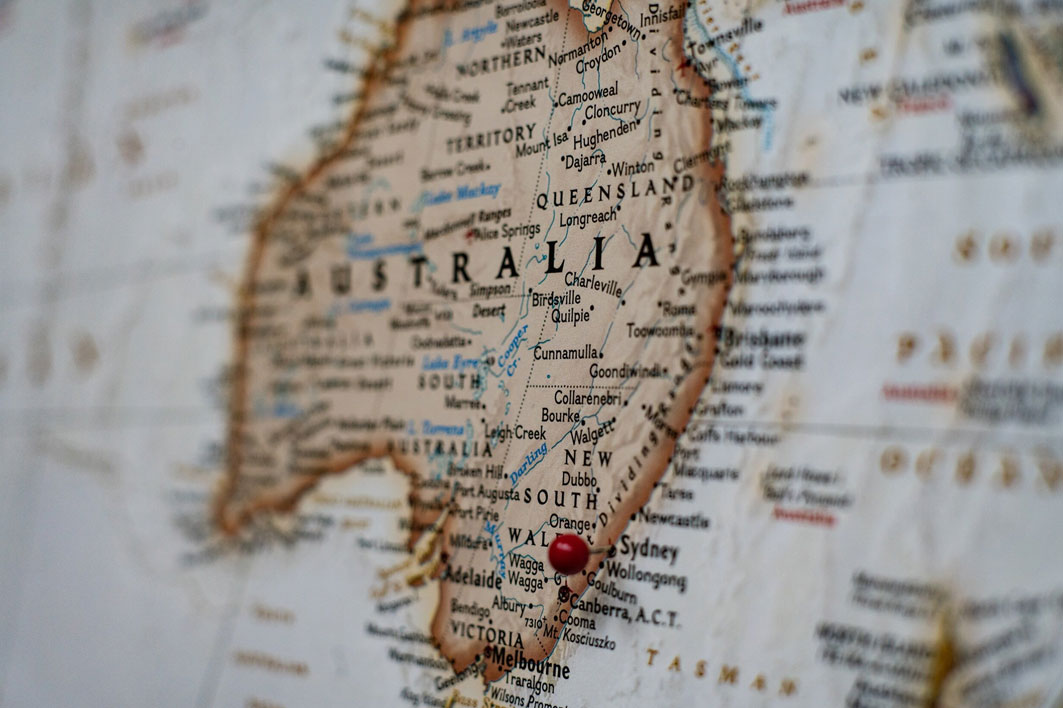
If you are interested in applying for a general skilled migration visa to Australia, it is important to have a good understanding of the skilled visa options and how the migration points test works, so that you can maximise your chances of being eligible to apply for a skilled visa.
A general skilled migration visa is an option available to skilled workers who are seeking to qualify for a skilled visa independently, or under a state or family sponsorship. It is an alternative to an employer sponsored visa.
One of the key criteria to qualify for a general skilled migration visa is the points test (a criterion that does not apply to employer sponsored visas). This is often the most challenging aspect for prospective skilled visa applicants to overcome when seeking an invitation to apply for the relevant skilled visa.
If you are considering applying for a general skilled migration program visa, an important concept to understand is the Expression Of Interest (EOI).
If you are considering applying for a general skilled migration visa, it is important to be aware that for certain visas in this visa class, you will first be required to lodge an EOI with the Department of Home Affairs (the Department) through SkillSelect. The EOI is not a visa application, but rather, it is the process by which you can express your interest in applying for the relevant skilled visa (It’s important to note, that there is NO fee to submit an EOI).
This requirement applies to the following skilled visa subclasses:
Let’s take a brief look at each of these visas below:
The ‘subclass 189’ is a federal sponsored visa that grants automatic permanent residence in Australia. It is subject to nil visa conditions or obligations. For this reason, it is often considered to be the most flexible of the skilled visa options available.
A subclass 189 points-based visa allows you to live and work in any state or territory permanently.
The ‘subclass 190’ is a state/ territory sponsored permanent residence visa. It is another points-based visa for which invitations are issued throughout each month by individual states and territories. One of the benefits of applying for state nomination is that you will be granted an additional 5 points.
An important aspect to consider, which does not apply to the subclass 189 visa is that there is an added step in the application process. In this case, you must also apply for nomination approval to a state or territory government. Only upon receipt of an invitation from the relevant state or territory to which you apply can you then apply to the Department for the visa itself.
Your obligations as a subclass 190 visa holder are that you must commit to your nominating jurisdiction’s obligations and commit to residing in your nominating State or Territory for two years from visa grant.
The ‘subclass 491’ is also a points-based state/ territory (or family) sponsored visa. It is a regional visa with a term of five years. The Department issues invitations for family sponsored EOI applications only (in invitation rounds). Invitations for state sponsorship are issued by individual states and territories throughout each month. This will grant you an additional 15 points for the nomination.
Being a provisional visa, this means it provides a pathway to permanent residence in Australia with the Subclass 191 Permanent Residence (Skilled Regional) visa, subject to meeting specified requirements.
Be mindful that as a subclass 491 visa holder, you must abide by visa condition 8579, which requires you to live, work and study in a designated regional area of Australia. For migration purposes, most locations of Australia outside of major cities (Sydney, Melbourne, Brisbane, Perth, etc.) are classed as regional areas.
If your EOI is successful, you will receive an invitation to apply for the visa, as specified in the invitation letter. This then enables you to proceed with lodgement of your visa application (provided you meet all other visa lodgement and visa grant requirements).
Please note, the below State and Territory program updates is a general overview only. It does not take into account any of your personal circumstances. You must check the State/Territory information carefully to ensure you can meet all the requirements for nomination.
Australia is currently facing a shortage of skilled migrants to fill workforce demands. In response, states and territories have been easing the conditions of their visa programs to help attract skilled workers from overseas.
Below is the monthly update for some of the State and Territory opportunities available.
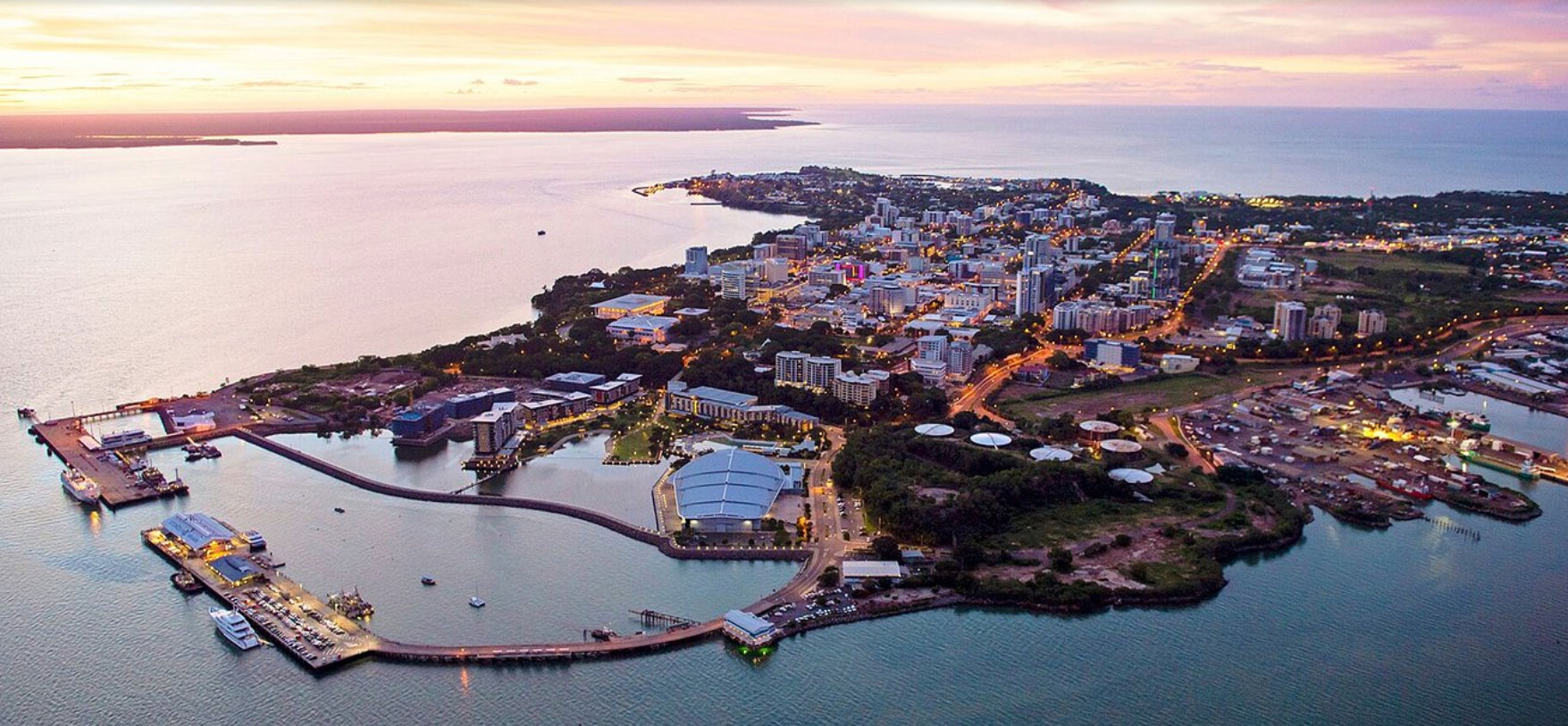
Program Status Update
UPDATE: Northern Territory General Skilled Migration (GSM) nomination applications for 2024-25
Northern Territory has now received sufficient nomination applications to fill the total allocations for the 2024-25 program year. To manage the large number of applications received against the limited allocation of nominations given to the Northern Territory we have suspended our online portal for new applications. All applications received before the suspension will continue to be assessed, and those who meet the eligibility criteria will be issued nominations.
The program will be reopened for new applications once nomination allocations are received for the 2025-26 program year (The program year generally runs from Start of July 2025 – End of June 2026).
During the suspension, applications will continue to be accepted by exception for onshore applicants who have certain visa deadlines before 1 July 2025. For more information on this, please view the update on NT GSM nomination applications for 2024-25 page.
Once the above mentioned temporary suspension is lifted, you may be able to proceed with the NT’s usual skilled migration program. Program details below:
People residing offshore are eligible to be considered for Northern Territory (NT) nomination. Invitations to apply for Northern Territory nomination will be via the ranking system.
The ‘Northern Territory Offshore Migration Occupation List’ identifies the occupations in current demand in the Northern Territory. This List is important if you want to apply for Northern Territory nomination for either a:
The ‘Northern Territory Offshore Migration Occupation List’ is only applicable for those applying for NT nomination from outside Australia, under the Priority Occupation stream.
Please note: The Northern Territory government has advised that offshore applicants will generally only be offered a Northern Territory nomination for a subclass 491 visa. Subclass 190 nominations will only be offered in exceptional circumstances, such as cases where the applicant has strong connections to the NT.
The NT advises eligible applicants to apply as soon as they meet the eligibility criteria. To receive a nomination from the NT Government, you must:
Before submitting an EOI for The Northern Territory, applicants should check that they meet all eligibility requirements.
For a further explanation, see the Frequently Asked Questions page on the Northern Territory Government website.
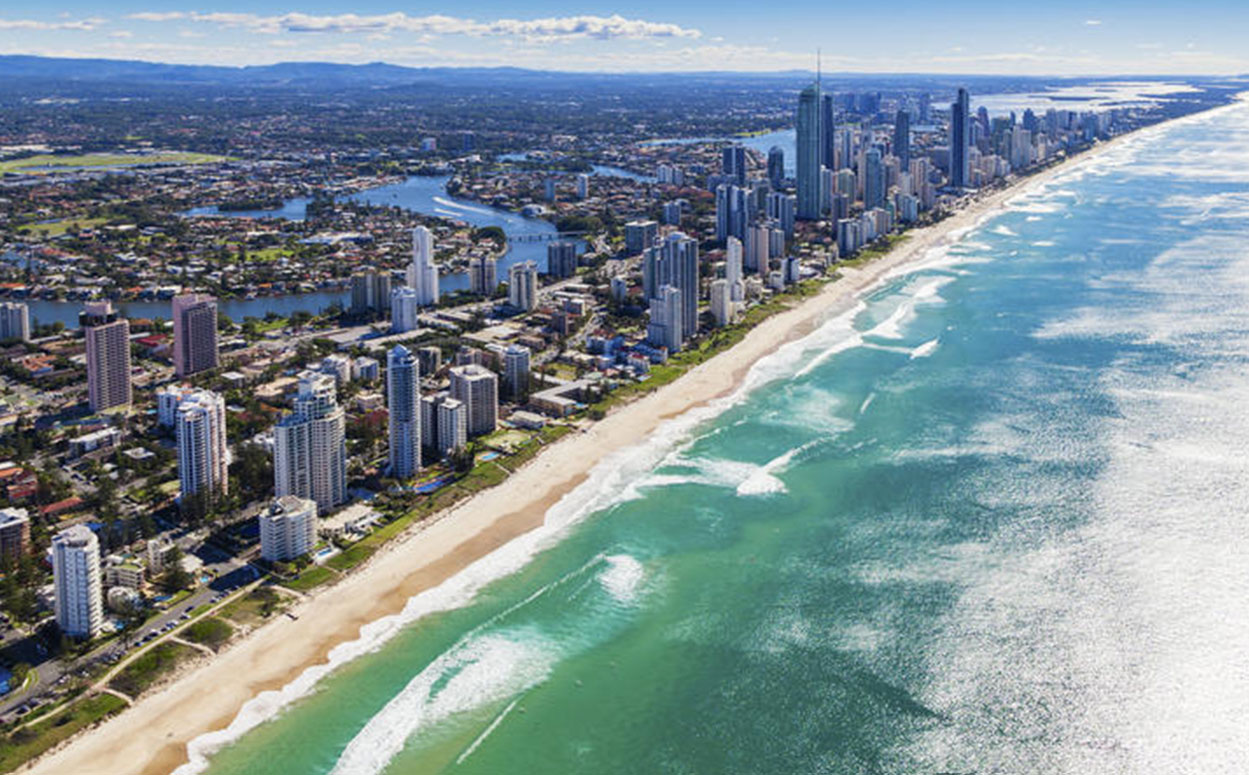
Program Status Update: Important Announcement
Queensland closed its 2024-25 skilled State Nominated Migration Program (SNMP) on May 27 2025.
Migration Queensland will continue to assess the applications currently under assessment until all nominations are completed.
Migration Queensland will resume accepting new ROIs from all eligible candidates when the 2025-26 program commences. (The program year generally runs from Start of July 2025 – End of June 2026).
Migration Queensland will publish details of the 2025-26 program when available.
Once the above mentioned temporary suspension is lifted, you may be able to proceed with Queensland’s usual skilled migration program. Program details below:
Depending on your occupation and situation, there are two state nomination options available for skilled migrants through Queensland.
For Queensland state nomination, prospective applicants must meet the Department of Home Affairs requirements, state-specific occupation requirements and have skills in an occupation that is available on the Queensland Skilled Occupation List.
You may undertake employment once onshore in Queensland through:
Offshore applicants meeting the minimum published requirements are eligible to lodge an Expression of Interest (EOI) on SkillSelect and then a Registration of Interest (ROI) on the Migration Queensland portal.
Migration Queensland has opened the 2024-25 State Nominated Migration Program. For more information, please see here.
NOTE: To be eligible for Queensland’s 2024-25 program, your EOI must be submitted on or after 13 September 2024.
Migration Queensland criteria requires you to:
The 2024-25 Skilled Migration Program is open to both onshore and offshore applicants and provides pathways for skilled workers, graduates, and small business owners.
Before submitting a Registration of Interest (ROI) for Queensland, applicants should check that they meet all eligibility requirements.
Note: In the EOI, select ‘Queensland’ as the only state of interest in the EOI, if you wish to be considered for an invitation to apply for Queensland nomination.
For a further explanation, see the Frequently Asked Questions page on the Queensland Government website.
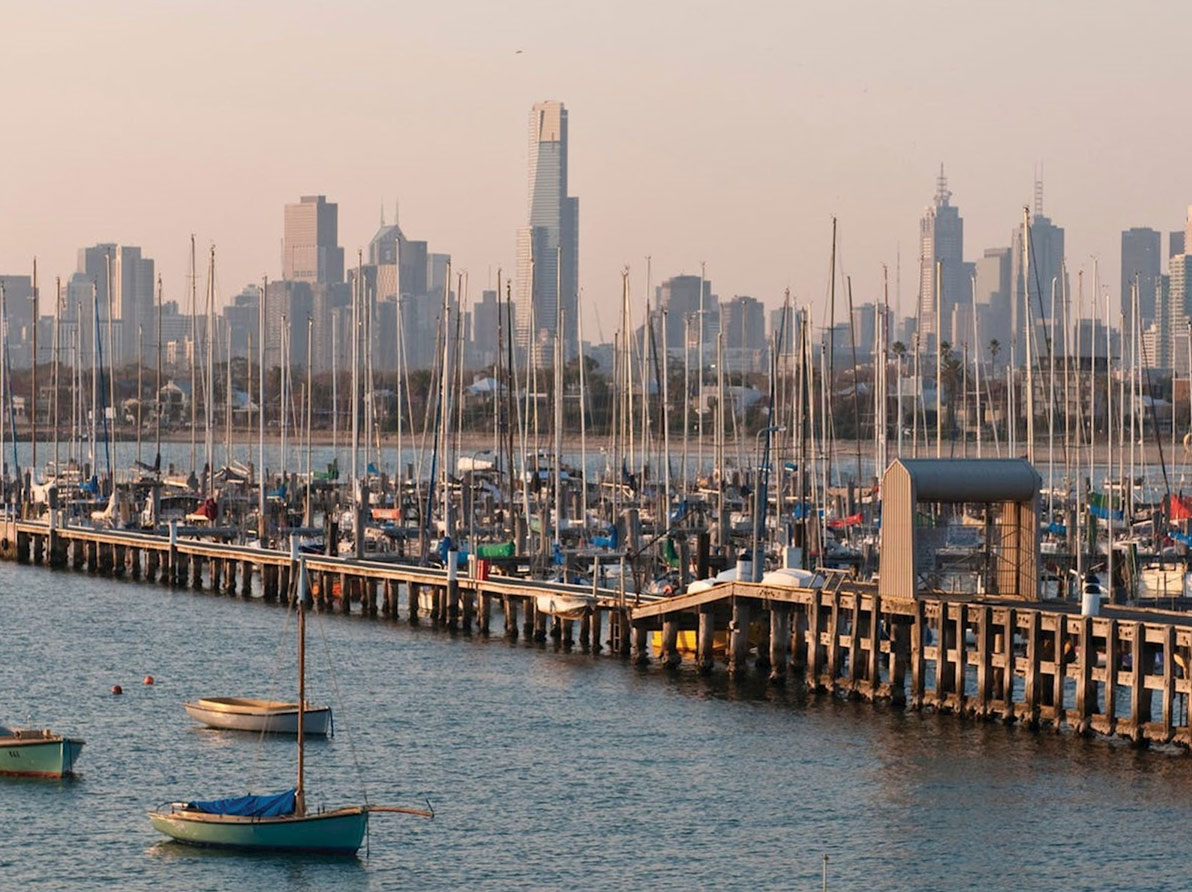
UPDATE: Victoria’s skilled visa nomination program for 2024-25
Victoria’s 2024-25 state nominated skilled visa program has closed to new Registrations of Interest (ROI) as of 4pm AEST on Tuesday 29 April 2025.
The program has attracted a lot of interest this year and has received many more ROIs than available places. Victoria will continue to assess submitted ROIs for any remaining nomination places in the 2024-25 program year.
The program will be reopened for new applications once nomination allocations are received for the 2025-26 program year (The program year generally runs from Start of July 2025 – End of June 2026).
Once the above mentioned temporary suspension is lifted, you may be able to proceed with Victoria’s usual skilled migration program. Program details below:
Open to offshore applicants, the program provides skilled migrants with a pathway to permanent residency in Victoria. The skills that successful applicants bring to Victoria benefits employers and the broader Victorian economy.
The program provides two visa pathways:
As with previous years, applicants will first need to submit a Registration of Interest (ROI) and then be selected on competitive merit to apply for visa nomination.
*Please note: Invitation rounds occur frequently throughout the financial year with no set date.
To be invited to apply for Victorian skilled visa nomination, you must firstly make or update an Expression of Interest (EOI) via the Australian Government’s SkillSelect and then submit a Registration of Interest (ROI).
NOTE: If you previously submitted a ROI and wish to be considered for invitation in the 2024-25 program, you must submit a new ROI.
Both onshore and offshore applicants are eligible to submit a Registration of Interest (ROI) for both the subclass 190 and subclass 491 visas.
Your ROI will remain in the system for selection until it is withdrawn, selected or the program year ends.
Before submitting an ROI for Victoria, applicants should check that they meet all eligibility requirements.
For a further explanation, see the Frequently Asked Questions page on the Victoria Government website.
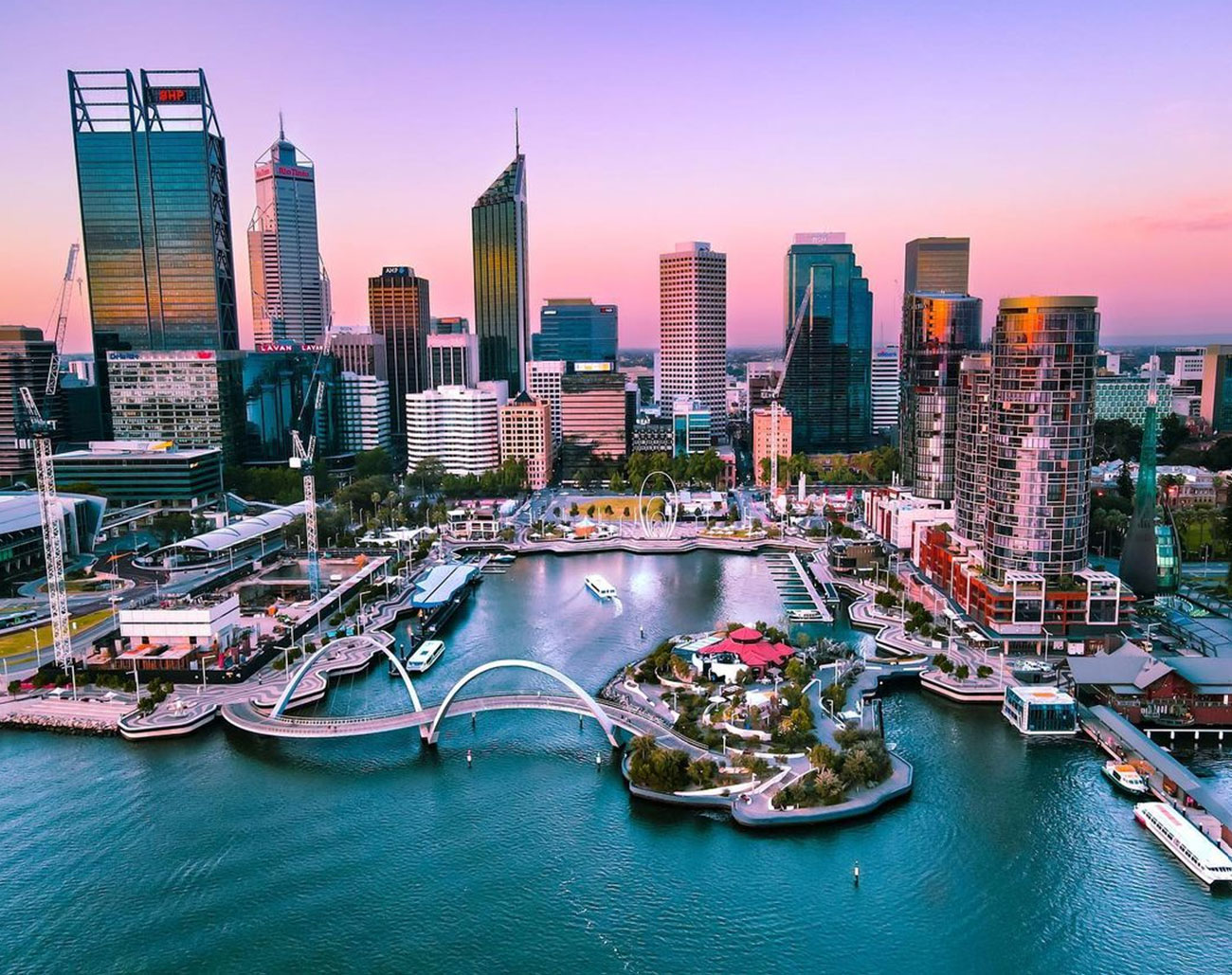
Program Status Update
People residing offshore are eligible to be considered for Western Australia (WA) State nomination. Invitations to apply for WA State nomination will be via the ranking system.
The Western Australian Skilled Migration Occupation List identifies the occupations in current demand in Western Australia. This List is important if you want to apply for Western Australia nomination for either a:
Please note that to be eligible for an invitation in the WA State Nominated Migration Program, you must meet both:
Before starting your application, you will need to check whether your occupation is available on either the WA Skilled migration occupation list (WASMOL) Schedule 1 or 2, or the Graduate occupation list. You can search for your occupation here. (The occupation list search bar is located under the heading ‘Eligible Occupations’.)
Features of the WA 2024-25 State Nominated Migration Program:
Before submitting an EOI for Western Australia, applicants should check that they meet all eligibility requirements.
For a further explanation, see the Frequently Asked Questions page on the Western Australia Government website.
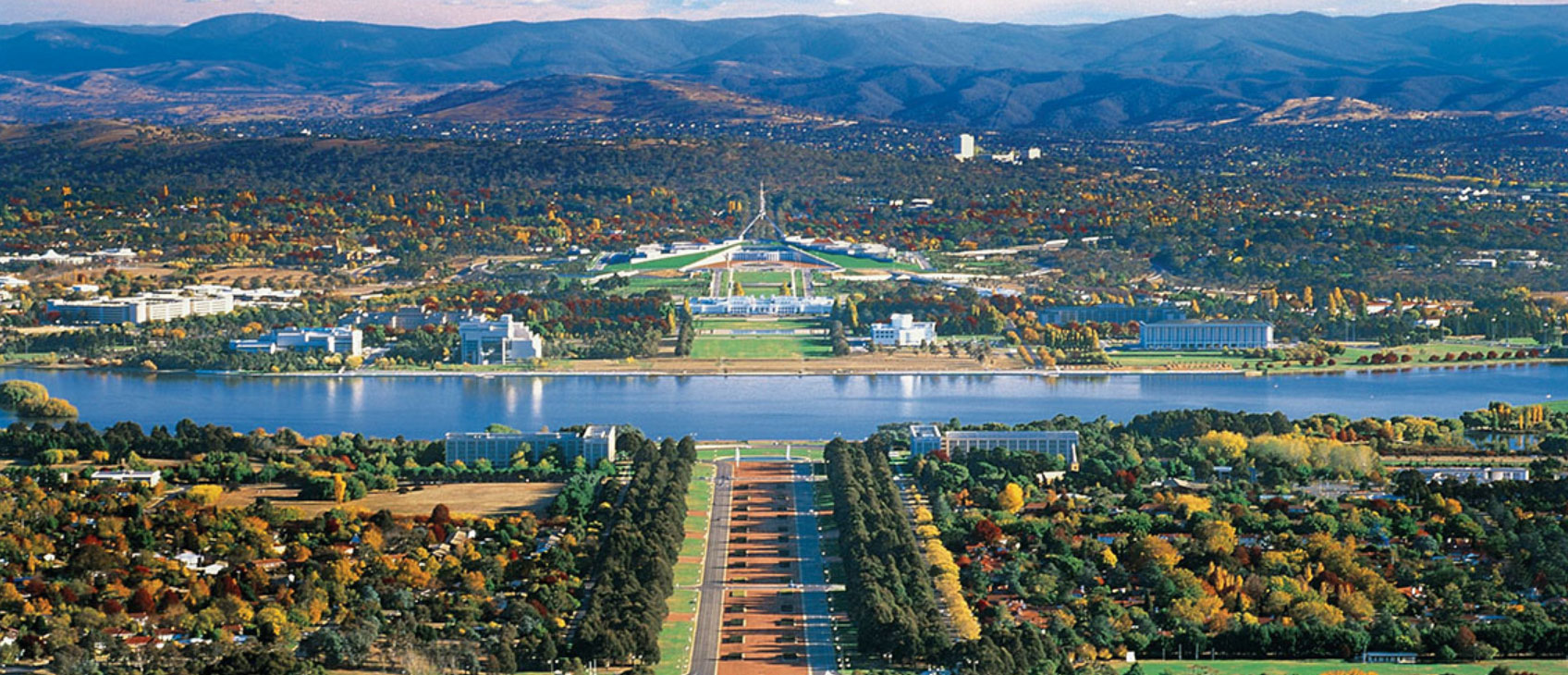
Program Status Update
The ACT Critical Skills List identifies the occupations in current demand in the ACT. This List is important if you want to apply for ACT nomination for either a:
The ACT Government will update this list every four months to make sure that the ACT Skilled Migration Program adapts and responds to the evolving critical skills needs of the ACT economy.
The Canberra Matrix is weighted to ensure that applicants who will make a positive economic contribution to the Territory and/or have demonstrated a genuine commitment to the ACT are more likely to be ranked and invited to apply for ACT nomination.
*ACT nomination does not guarantee a migration outcome. You must still meet the Department of Home Affairs criteria.
Every month, a certain number of nomination invitations are available (prorated on the annual allocation) to those working in the highest ranked Matrix in each occupation.
You can view the ACT’s most in-demand skills for skilled migration by consulting the ACT Critical Skills List.
Before submitting an EOI for The Australian Capital Territory, applicants should check that they meet all eligibility requirements.
Once you’ve submitted a valid Department of Home Affairs Skill Select EOI, follow the ACT Government Process to apply for ACT nomination.
For a further explanation, see the Resources page on the ACT Government website.
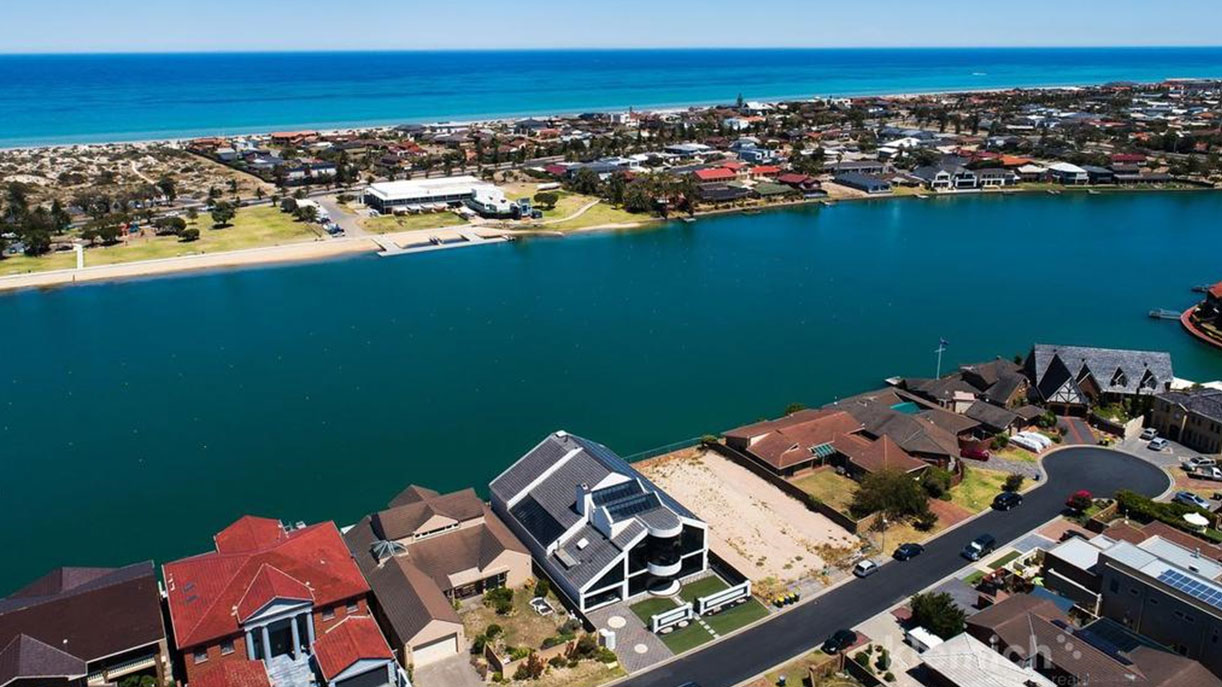
Program Status Update
Depending on your occupation and situation, there are two state nomination options available for skilled migrants through South Australia.
For South Australian state nomination, prospective applicants must meet the Department of Home Affairs requirements, state-specific occupation requirements and have skills in an occupation that is available on the South Australian Skilled Occupation List. Offshore applicants meeting the minimum published requirements can now lodge an Expression of Interest (EOI).
There is an enormous range of occupations on South Australia’s Skilled Migration Occupation List in a range of industries – search for your occupation here.
South Australia will select offshore applicants to apply for state nomination from those who have submitted an Expression of Interest (EOI) through SkillSelect. Offshore applicants will not need to lodge a Registration of Interest (ROI) for this year’s program. South Australia will be nominating offshore applicants from over 250 occupations on South Australia’s Skilled Migration Occupation List.
If you are currently residing offshore and seeking to move to South Australia, the first step is to create an Expression of Interest (EOI) in SkillSelect ensuring you select South Australia as your first preferred State or Territory.
The South Australian Government can then review your EOI for consideration under the Skilled Nominated (Permanent) visa (subclass 190) or Skilled Work Regional (Provisional) visa (Subclass 491).
For most occupations, applicants must have a minimum of three years of skilled employment in their nominated or related occupation within the last 5 years to secure an invitation to apply for SA nomination.
South Australia will be assessing candidates on merit by the following factors:
For occupations in the construction trades (as listed here) applicants must have a minimum of one year of skilled employment in their nominated or related occupation within the last 3 years.
Applicants in the construction trades will be assessed on merit by the following factors:
Before submitting an EOI for South Australia, applicants should check that they meet all eligibility requirements.
For a further explanation, see the Frequently Asked Questions page on the South Australia Government website.
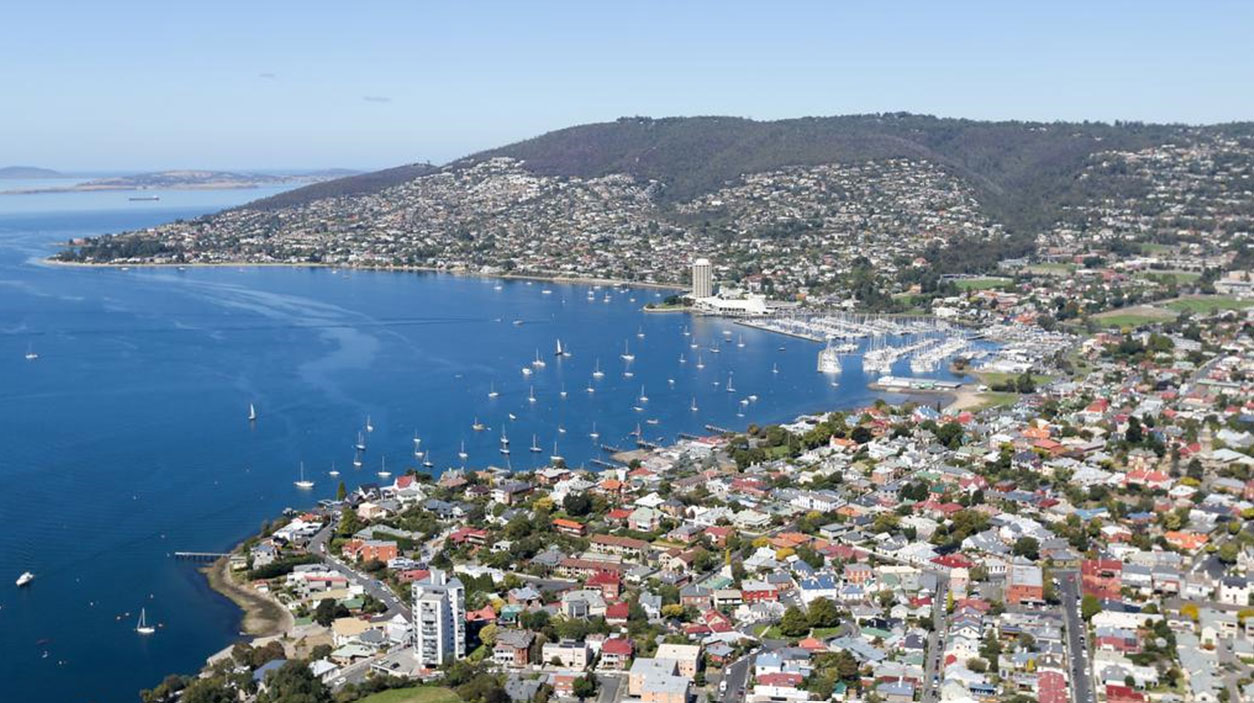
Program Status Update: Important Update – Restrictions on further ROI submission
From 5:00 pm Monday, 19 May 2025, Registrations of Interest (ROIs) will only be accepted from candidates who are allocated a Gold Pass.
From 5:00pm Monday, 16 June 2025, no further ROIs will be accepted for the remainder of the 2024-25 program year.
With demand for nomination now exceeding the remaining places available for the Tasmanian Skilled Migration State Nomination Program, from 5:00 pm Monday, 19 May 2025, Registrations of Interest (ROIs) will only be accepted from candidates who are allocated a Gold Pass.
The Gold Pass category – which applies to candidates who have a skills assessment and eligible employment related to a critical role – will then close at 5:00pm Monday, 16 June 2025, with no further ROIs accepted for the remainder of the 2024-25 program year.
Migration Tasmania will resume accepting ROIs from all eligible candidates when the 2025-26 program commences. (The program year generally runs from Start of July 2025 – End of June 2026).
Further information regarding the 2025-26 program will be published on the Migration Tasmania website and in our newsletter when it becomes available.
Migration Tasmania will continue to assess applications for nomination that have been lodged but not yet decided. However, with few nomination places remaining, not all applicants will be nominated this program year.
Once all nomination places are used, any applications approved will be nominated after Tasmania receives its nomination allocation for the 2025-26 program year.
ROIs that are not invited to apply for nomination before the end of the program will continue to be held in the Application Gateway and considered for an invitation to apply for nomination when the 2025-26 program opens.
Once the above mentioned temporary suspension is lifted, you may be able to proceed with Tasmania’s usual skilled migration program. Program details below:
Working in Tasmania
The two state nomination options available for skilled migrants through Tasmania are:
The Tasmanian State Nomination Skilled Migration Program supports Tasmanian businesses and increases the state’s working age population. It does this by attracting and retaining migrants with skills genuinely in need by employers, or with the capacity to settle in Tasmania through skilled employment in the long-term, and business activities that will increase employment opportunities.
Tasmania’s skilled migration program is for people wanting to move to the state who have skills that Tasmania need. Skilled migrants are attracted to Tasmania because of the state’s enviable lifestyle, career opportunities, affordable housing, reputable schools and a globally recognised university.
The Migration Tasmania Application Gateway is now available for registrations of interest (ROI) and applications for skilled visa nomination from Tasmania.
Anyone seeking Tasmanian nomination for a Subclass 190 Skilled Nominated Visa or Subclass 491 Skilled Work Regional Visa must first register in the Migration Tasmania Application Gateway .
Before submitting an ROI for Tasmania, applicants should check that they meet all eligibility requirements for either;
For a further explanation, see the Frequently Asked Questions page on the Tasmania Government website.

Program Status Update
The New South Wales government has invited applications from offshore migrants under the following nomination streams:
The NSW State Government announced that offshore applicants skilled in certain ANZSCO unit groups are eligible for NSW nomination.
*Please note: Invitation rounds occur frequently throughout the financial year with no set date.
NSW invites and nominates SkillSelect EOIs at the ANZSCO unit group level. To be eligible for NSW nomination (for either Subclass 190 or Subclass 491), your occupation must fall within an ANZSCO unit group identified on the NSW Skills List which reflects skills in high demand across the state, and be eligible for the visa.
Before submitting an EOI for New South Wales, applicants should check that they meet all eligibility requirements for either;
For a further explanation of how the skills list works, see the Common questions about skilled visas page on the NSW Government website.

Western Australia has officially crossed the 3 million population mark for the first time in history, cementing its place as the fastest-growing state or territory in the country in 2024. This milestone, confirmed by the Australian Bureau of Statistics (ABS), is a strong signal that Australia’s migration system is continuing to support sustainable national growth — and that WA is emerging as a key destination for skilled workers, students, and families alike.
According to the ABS, Western Australia’s population reached 3,008,697 people by the end of 2024, representing a 2.4% annual growth rate — the highest of any jurisdiction in Australia. In contrast, states like Tasmania and New South Wales recorded much slower population increases, with Tasmania gaining just 1,600 people overall.
While every state and territory experienced positive population growth over the year, WA’s performance stands out for its pace, consistency, and balance between internal and overseas migration.

Nationally, net overseas migration accounted for 340,800 of the 445,900 people added to Australia’s population in 2024. In Western Australia, as in most jurisdictions, migration was the primary driver of growth — reinforcing the importance of skilled and student visa pathways in shaping Australia’s future.
The ABS noted that while births and deaths contributed to overall population change, the scale of international migration made it the standout factor influencing national and state-level demographics.
This trend highlights the continued global appeal of Australia — and Western Australia in particular — as a destination offering opportunity, safety, and long-term stability.
 Perth, the state capital, has long been known for its expansive urban layout and lifestyle advantages. As population growth surges, Perth is attracting skilled workers and international students across a wide range of industries — including healthcare, construction, engineering, mining, and education.
Perth, the state capital, has long been known for its expansive urban layout and lifestyle advantages. As population growth surges, Perth is attracting skilled workers and international students across a wide range of industries — including healthcare, construction, engineering, mining, and education.
With strong employer demand and an increasing focus on regional migration strategies, Western Australia is quickly becoming a migration hotspot for those looking to build a life in a state that offers both opportunity and liveability.
In response to ongoing public debate around housing and migration, WA Minister for Early Childhood Education and federal MP Dr Anne Aly addressed concerns during an ABC Perth panel discussion, stressing that migrants should not be scapegoated for housing pressures.
“The fact that there are not enough houses is because we do not build enough houses,” Dr Aly said. “That is why our government has an ambitious plan to build 1.2 million homes and has introduced the Housing Australia Future Fund to address long-term supply.”
This reinforces the federal government’s balanced approach — acknowledging infrastructure challenges while continuing to attract the skills and talent Australia needs to grow and compete in a global economy.

With a national population now estimated at 27.4 million, and every state benefiting from migration-led growth, the message is clear: Australia remains open and committed to welcoming skilled professionals, students, and families who want to contribute to its future.
Western Australia’s success story is just one example of how migration — when guided by fair, transparent, and future-focused policy — continues to be a powerful driver of national prosperity.
For prospective migrants considering Australia as their next chapter, the signs are promising: demand is strong, pathways are open, and opportunity is growing — especially in places like WA, where the population and potential have never looked brighter.

Australia’s growing migrant population has made an extraordinary global impact, with overseas remittances hitting a record $38.2 billion in 2024, according to new analysis. This milestone reinforces the critical role migrants play not only in contributing to Australia’s economy but also in supporting families, communities, and development outcomes across the world.
The data, compiled using sources from the World Bank, ABS, DFAT and KNOMAD, shows Australia’s migrants are not just building lives here — they’re lifting others as they go.
In 2024, Australia’s population grew by 445,900 people, with net overseas migration accounting for over 340,800 of that growth. These newcomers — many of them skilled professionals, international students, and permanent residents — added enormous value to Australia’s economy while also sending financial support to their families abroad.
India and China were the top recipients of remittances from Australia:
Other developing nations, including those in Africa and the Pacific, also benefited greatly. In many cases, remittances from migrants in Australia exceeded what the Australian government provides in foreign aid, such as in Nepal — highlighting the direct, personal and often life-changing impact of these private transfers.
Remittances are not just about money — they are expressions of loyalty, responsibility, and intergenerational support. For many migrants, helping family back home is part of their motivation to succeed in Australia.

Critics may argue that remittances represent money flowing out of Australia. But this view overlooks the broader reality: the majority of these funds are earned through hard work, tax-paying employment, and local spending. Migrants participate in the Australian workforce, stimulate local economies, pay GST, and fill critical labour gaps — particularly in health care, construction, aged care, and STEM fields.
In fact, most remitting migrants spend the majority of their income in Australia, supporting rental markets, education, food, transport, and community businesses. What is sent abroad is often a small fraction — but one that carries enormous weight for recipients overseas.
These flows also reinforce Australia’s influence in the Asia-Pacific region, particularly in countries such as:
This financial connection builds soft power, economic diplomacy, and long-term regional stability — all while maintaining close cultural ties between migrant Australians and their countries of origin.

As of June 2024, 31.5% of Australia’s population was born overseas, the highest proportion in over a century. Migrants from India, China, England, New Zealand and the Philippines make up the five largest overseas-born groups — with Indian-born Australians now ranking second in population.
These migrants come to Australia to work, study, innovate, and build families. Along the way, many repay debts, assist ageing parents, or support the education of siblings — all while contributing meaningfully to their communities in Australia.
In many cases, the money they send home supports the very families who helped them come here in the first place — an act of reciprocity that strengthens families across continents.
With remittance flows expected to rise even further in 2025, Australia’s role in driving financial stability across the Indo-Pacific and beyond is undeniable. Rather than seeing this as a loss, it should be recognised as a hallmark of a successful migration system — one where individuals thrive, contribute locally, and elevate others globally.
This latest milestone is a reminder that Australia’s immigration program is not just building a stronger Australia — it’s building a stronger world.

As Australia continues to welcome skilled migrants, international students, and humanitarian entrants, the nation is facing a parallel challenge — meeting the housing needs of a growing population. Recent analysis shows that if Australia is to meet its national housing target of 1.2 million new dwellings by 2029, significant and coordinated action is needed — not just at the construction level, but in how we plan, approve, and prioritise housing development.
While this poses real challenges, it also presents a transformative opportunity: to build a more inclusive, modern, and well-connected Australia — one that supports growth, prosperity, and migration at the same time.
To hit the government’s target of 240,000 dwellings per year under the National Housing Accord, an estimated 34 square kilometres of infill land must be made available annually across existing suburbs. That’s equivalent to redeveloping land 26 times the size of Melbourne’s CBD — every year.

Why infill? Because 70% of new housing is expected to be built in already established suburbs, where infrastructure like roads, schools, and transport already exists. It’s a logical and efficient strategy, but unlocking that land at the required scale demands coordination, political will, and in some cases, difficult decisions about land use and planning reform.
Some critics argue that migration is placing pressure on housing, but this narrative misrepresents the core issue. Migrants don’t cause housing shortages — shortages are caused by years of underbuilding, regulatory bottlenecks, and fragmented land use planning.
In fact, a well-managed migration program brings skilled workers, including builders, engineers, and planners, who can help deliver the housing and infrastructure we need. Migration also contributes to economic growth, increases demand for housing in strategic areas, and supports industries critical to delivering construction and infrastructure targets.
Australia’s federal government has already committed to building 1.2 million new homes over five years, backed by the Housing Australia Future Fund and state-led housing accelerator programs. These efforts are aimed at increasing supply, improving affordability, and unlocking new opportunities for both domestic and overseas-born residents.
According to the National Housing Supply and Affordability Council (NHSAC), the biggest barriers to hitting our housing targets are not migrants, but “structural constraints.” These include:
Solving these challenges requires federal, state, and local governments working together, supported by streamlined planning rules, increased zoning for medium-density housing, and greater investment in skills and construction innovation.

Housing construction today accounts for only 33% of all construction activity, down from 84% post-WWII. Yet the need for housing has never been more urgent. In 2024, only 177,000 dwellings were completed — well short of the 240,000 needed annually. At the same time, infrastructure works like roads and renewable energy projects remain essential.
The solution is not to pit housing against other national priorities — but to expand capacity, boost workforce pipelines, and modernise how housing is approved and delivered.
Australia’s future is multicultural, skilled, and connected. To support this, we need a housing system that matches the ambition of our migration program.
That means treating housing as a nation-building priority — not just for new arrivals, but for all Australians. With bold planning, clear targets, and the right investment, Australia can ensure that every new home supports a thriving, growing, and welcoming country.

For thousands of international students, studying in Australia isn’t just about world-class education — it’s also a stepping stone toward long-term settlement and a new life. But with Australia’s 2025 Migration Strategy introducing tighter residency pathways, the key to staying longer lies in choosing the right course from the start.
The good news? Permanent residency (PR) is still within reach. You just need a strategic plan — one that aligns your education with Australia’s real skills needs.
Australia’s immigration system is points-based, and one of the most critical factors is your nominated occupation. The government regularly updates its Skilled Occupation Lists, which outline jobs eligible for skilled visas such as the subclass 189, 190, and 491.
These lists are based on national and regional labour shortages — meaning, if your future profession appears on them, you’re already one step closer to a PR pathway.
Before enrolling in any course, ask:
✅ Is the job I want on the Skilled Occupation List?
✅ Will this degree lead to a positive skills assessment by the relevant assessing authority?
Common high-demand fields include:
Studying in these fields doesn’t guarantee PR — but it greatly improves your chances.
To qualify for most skilled visas, you’ll need a positive skills assessment — a formal confirmation that your qualification and experience match Australian standards for your chosen occupation.
Before enrolling, check which organisation assesses your future occupation, and make sure your course is recognised by them.
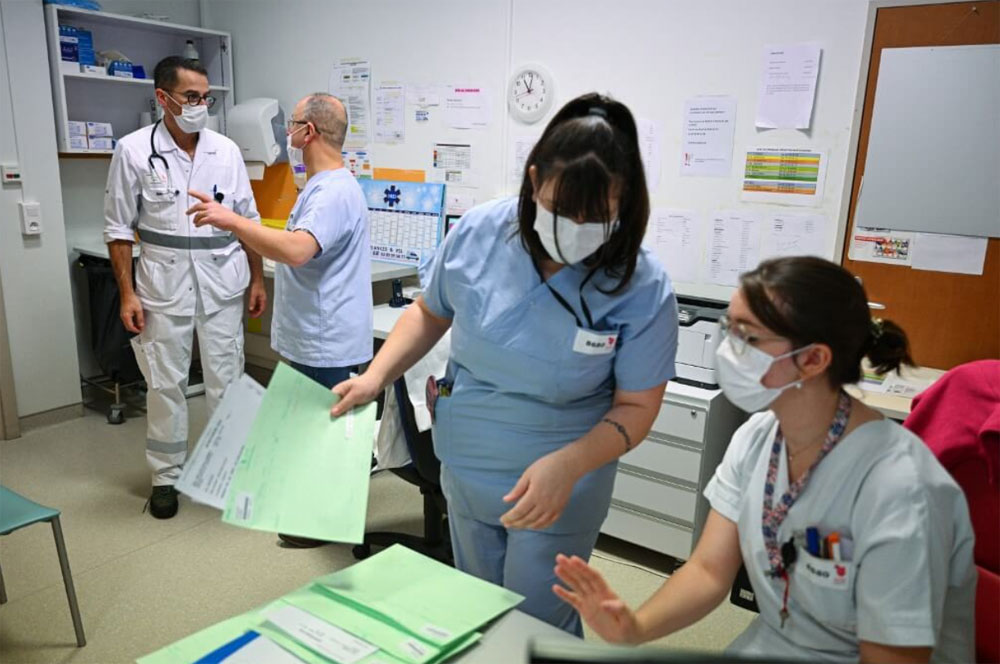
Studying in designated regional areas can open additional doors. You may be eligible for longer post-study work rights, extra points on your skilled visa application, and access to regional nomination under the subclass 491 or 190 visa.
Many regional universities offer top-tier courses and strong employment support — plus a lower cost of living and smaller, welcoming communities.
PR isn’t just about what you study — it’s about how you use it.
While studying, you should:
By the time you graduate, you want to be more than qualified — you want to be job-ready and strategically positioned for the next step.
Australia continues to welcome international students — but in 2025 and beyond, the system rewards those who plan ahead. By aligning your education with Australia’s real-world skill needs, you don’t just study smart — you set yourself up for a future in the country you now call home.
If staying longer is part of your goal, it starts with what — and where — you study. Choose wisely, and you could turn your student visa into a permanent opportunity.

Australia’s Migration Strategy for 2025 has set the tone for a smarter, more balanced approach to international education. While some changes—such as higher visa fees and tighter residency pathways—have made headlines, the broader picture is one of opportunity, stability, and renewed commitment to genuine international students.
The strategy aims to ensure that Australia remains a world-leading study destination, while also protecting the integrity of its visa system and supporting regional development. For international students planning to study, live, and grow in Australia, these reforms offer a clearer path, higher quality assurance, and new possibilities for long-term success.

The rise in visa fees is part of a broader strategy to filter out non-genuine applicants and ensure that students who come to Australia are well-prepared, financially capable, and academically committed. For those who meet these criteria, the outcome is a system with fewer delays, stronger protections, and better educational outcomes.
This reform sends a clear message to serious students: you are welcome, and your contributions are valued.
By tightening entry requirements and linking post-study opportunities more closely to labour market needs, Australia is creating a system where international students not only study, but thrive — with pathways that reflect real skills shortages and long-term economic needs.
While permanent residency pathways are becoming more selective, they are also becoming more transparent and better aligned with the jobs Australia needs to fill.
Students who complete qualifications in high-demand fields — especially in health, engineering, IT, teaching, and trades — will find that a well-planned educational journey still leads to excellent PR prospects. The reforms simply encourage students to choose the right courses, perform well, and actively contribute to the Australian workforce.
For ambitious students, this is a positive shift: one that rewards commitment, foresight, and alignment with national priorities.
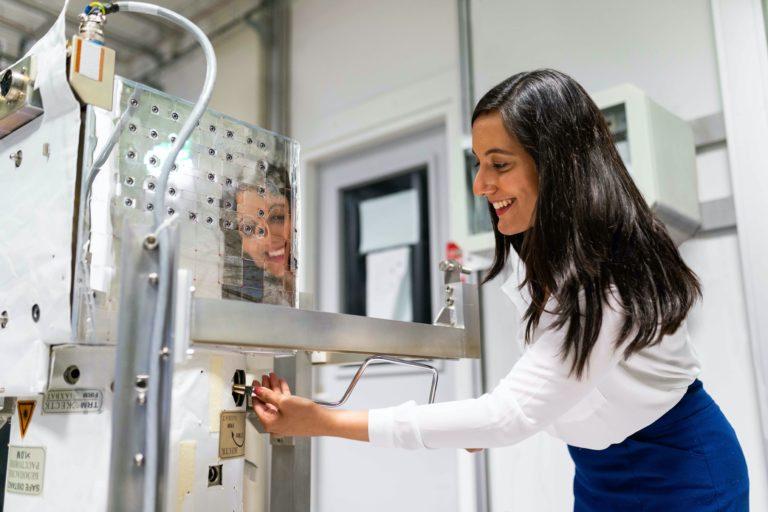
The 2025 strategy also brings new incentives for international students to study and settle in regional Australia. These areas not only offer high-quality education, but often provide:
Studying in a regional area can improve both lifestyle and migration prospects — making it a smart strategic move for students looking to stay long-term.
Australia remains one of the most trusted and respected destinations for international education. The 2025 Migration Strategy builds on this legacy by strengthening quality, streamlining visa systems, and focusing on national outcomes.
International students will continue to play a vital role in Australia’s cultural and economic life. With the right preparation and a clear plan, they will find a welcoming environment, competitive education, and promising career pathways.
In this new era, success is no longer about shortcuts — it’s about genuine intention, purposeful study, and being part of Australia’s future. And for those ready to make the most of it, the opportunity has never been greater.

The Maroons celebrate a Tom Dearden try during Game 3 of the 2025 State of Origin series between Queensland and NSW in Sydney. Photograph: Dan Himbrechts/AAP

The Wallabies were denied a series win as the British & Irish Lions stormed back with a controversial late try at the MCG.
Melbourne, Victoria. July 2025.

Australia completed a dominant 8–0 clean sweep over the West Indies, sealing the tour with a thrilling T20 win in Tarouba.
Trinidad & Tobago, Caribbean. July 2025.

Vivid Sydney lit up the harbour in July with bold new projections, including David McDiarmid’s “Kiss of Light” electrifying the Opera House sails.
Sydney, NSW. June 2025.

Laneway Festival roared into Melbourne in July, with electrifying headline sets by Charli XCX, Clairo and Beabadoobee energising the urban outdoor stage.
Melbourne, Victoria. July 2025.

NAIDOC Week lit up The Rocks and Barangaroo in July with the National Indigenous Art Fair, First Nations workshops, and wildflower plant installations.
Sydney, NSW. July 2025.

The Australian Festival of Chamber Music bowed out in Townsville this July with 36 skilled musicians across Queens Garden, ending its local run before relocating.
Townsville, Queensland. July 2025.

Dalby PCYC Boxing Club swept the Golden Gloves tournament in Brisbane mid‑July—five fighters, eight wins, all earning titles in a stellar national performance.
Brisbane, Queensland. July 2025.

A new species of “flapjack” octopus (Opisthoteuthis carnarvonensis) was discovered in May, with its pancake‑like body, blood‑red tentacles and massive eyes revealing a captivating adaptation to life over 1 km under Western Australia’s Gascoyne Marine Park.
Western Australia. July 2025.

Despite devastating floods earlier in the year, vast swathes of Outback Queensland have transformed into lush landscapes and glistening inland seas by July, drawing wildlife and visitors alike. Outback Queensland. July 2025.
This Bulletin and its contents is for general information purposes only and should not be used as a substitute for consultation with professional advisors.
As legislation and travel requirements are constantly changing, we strongly recommend obtaining advice on your individual situation from a Registered Migration Agent. Please click here to book a consultation with one of our Registered Australian Migration Agents, located in Australia.






You can manage your membership and billing method by clicking here
Terms of Service
Privacy Policy
Copyright © 2025 Office of Immigration Australia, a private company registered in Australia. All Rights Reserved.